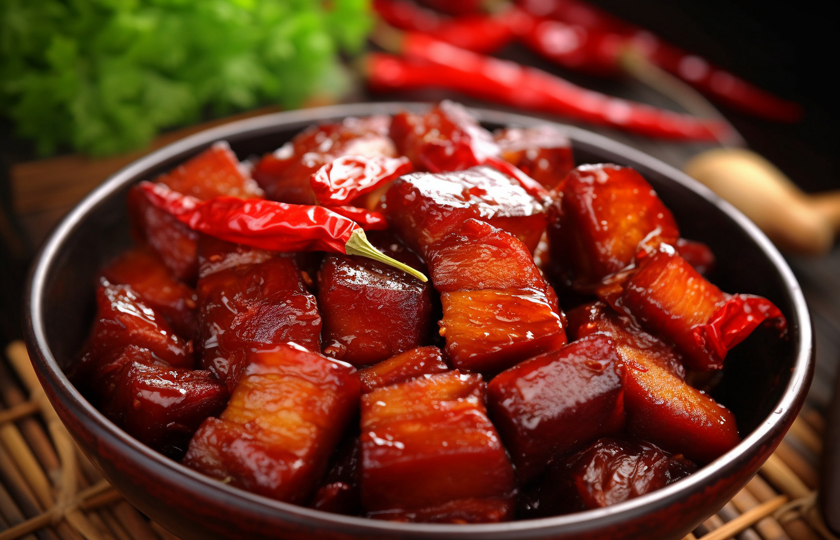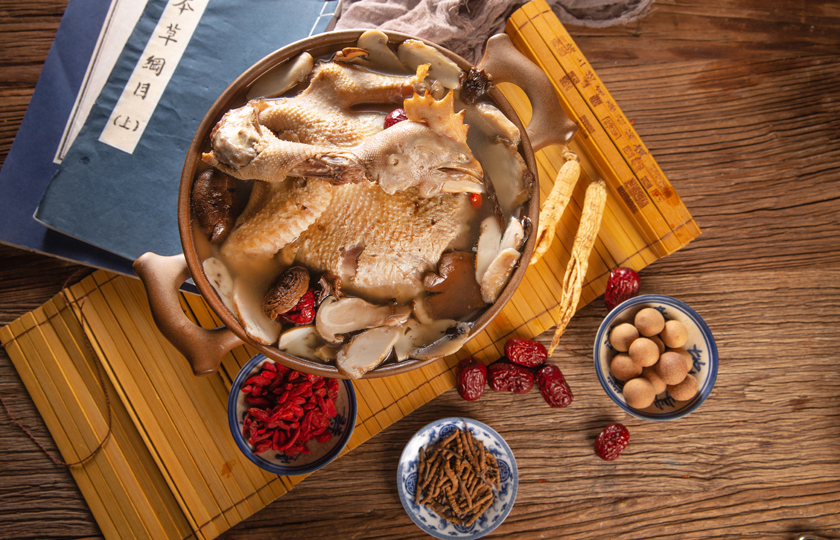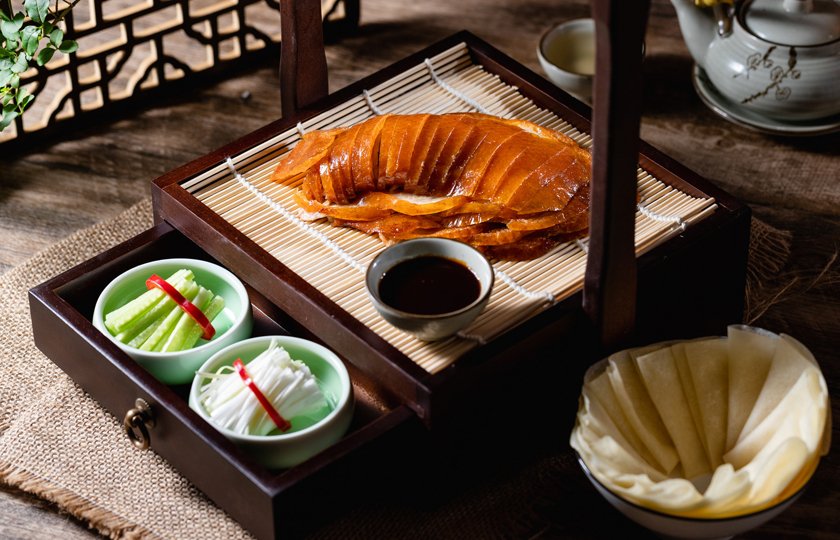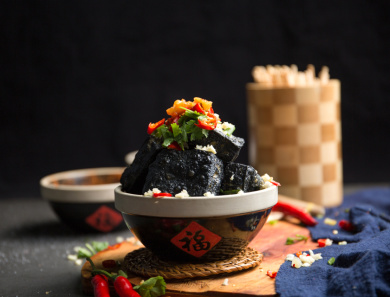A Glimpse into the Rich Tapestry of Chinese Cuisine History

Chinese cuisine originated in ancient times, flourished in the Tang and Song dynasties, and reached its peak in the Ming and Qing dynasties. With a hundred varieties of techniques, countless ingredients and diverse flavors, after years of precipitation, it finally becomes a resplendent chapter of food.
Origin and Development of Chinese Cuisine
Chinese cuisine has a long history and began with roasted food by fire in primitive society.
During the Xia, Shang and Zhou dynasties, bronze cooking utensils and seasonings appeared, and cooking techniques began to develop initially.
In the Spring and Autumn Period and the Warring States Period, differences between northern and southern cuisines emerged. Iron cooking utensils improved cooking efficiency, and techniques such as frying and stir-frying arose.
During the Qin and Han dynasties, cooking cultures merged, and ingredients from the Western Regions were introduced, enriching cooking content.
During the Tang and Song dynasties, economic prosperity promoted the development of the catering industry. There were diverse varieties of dishes, and the individual meal system transformed into the communal meal system.
During the Ming and Qing dynasties, Chinese cuisine became mature. Cooking schools were basically formed. Famous cuisines such as Shandong cuisine, Sichuan cuisine, Cantonese cuisine, and Huaiyang cuisine each had their own characteristics.
Today, Chinese cuisine has developed to a brand new stage. On the basis of inheriting traditions, it continuously innovates and develops, forming a more colorful and unique Chinese cooking culture.
What is the culture of Chinese cuisine?
Chinese food culture has a long history and is extensive and profound.
From the perspective of ingredients, it covers a very wide range, including various ingredients such as cereals, meats, poultry, seafood, vegetables, fruits, and more.
There are a variety of cooking methods, including dozens of methods such as roasting, boiling, steaming, frying, stir-frying, deep-frying, stewing, slipping, and exploding.
In terms of dietary concepts, China has unique ideas. For example, "medicine and food have the same origin." It emphasizes the health-preserving effects of food and takes care of the body through diet.
Chinese food culture also pays attention to etiquette. There are corresponding food etiquette on different occasions. For example, traditional etiquette such as elders starting to eat first reflects respect and order.
In terms of cuisines, famous cuisines such as Shandong cuisine, Sichuan cuisine, Cantonese cuisine, and Huaiyang cuisine have been formed. Each cuisine has its unique flavor, cooking characteristics, and representative dishes.
What is Chinese cuisine's base?
The foundation of Chinese cuisine can be attributed to several factors that contribute to its depth and diversity.

Agricultural Culture:
China has always been an agricultural powerhouse, and its agricultural culture deeply influences its culinary traditions. Throughout history, the Chinese people have attached great importance to the cultivation of grains and the preservation of food. Grains, vegetables, fruits, poultry, and seafood form the essential ingredients of Chinese cuisine.
Seasonal Variations:
Chinese cuisine pays close attention to the notion of "eating in season," which means that ingredients are selected according to the changing seasons. Spring is for enjoying bamboo shoots, summer for indulging in watermelon, autumn for relishing crab, and winter for savoring lamb. This practice not only ensures the freshness of ingredients but also reflects the Chinese people's reverence and gratitude towards nature.
The Union of Medicine and Food:
Traditional Chinese medicine has had a profound impact on Chinese cuisine. In Chinese medicine theory, there is a belief in the "unity of medicine and food," which holds that food not only satisfies hunger but can also promote health and well-being. Consequently, Chinese cuisine often incorporates ingredients known for their therapeutic properties, such as goji berries, red dates, and longan.
Family Heritage:
The culinary techniques of Chinese cuisine are frequently passed down through families. Each household has its own signature dishes that carry not only memories but also the care and education passed on from elders to younger generations.
What are the classic cuisines of China?

Sichuan Cuisine: Known for its numbingly spicy and fragrant flavors, Sichuan cuisine boasts signature dishes like Mapo Tofu, Kung Pao Chicken, and Boiled Fish. This cuisine emphasizes precise cooking times and seasoning, expertly employing chili peppers and Sichuan peppercorns to deliver intense taste sensations.
Shandong Cuisine: Hailing from Shandong province, Shandong cuisine focuses on authenticity and meticulous seasoning. Signature dishes such as Scallion-Sea Cucumber, Dezhou Braised Chicken, and Sweet and Sour Carp showcase vibrant colors and deep, rich flavors, highlighting the essence of ingredients.
Cantonese Cuisine: Represented by Guangdong province, Cantonese cuisine emphasizes light and flavorful dishes that preserve the natural flavors of ingredients. Signature dishes like White Cut Chicken, Roast Goose, and Shrimp Dumplings showcase intricate knife skills and a variety of cooking techniques, often utilizing steaming, boiling, and stewing.
Jiangsu Cuisine: Jiangsu cuisine, known for its emphasis on knife work and precise cooking times, features a sweet flavor profile. Signature dishes such as Squirrel-shaped Mandarin Fish, Crabmeat Lion's Head Meatball, and Red-Braised Lion's Head boast vibrant colors, delicate textures, and meticulous seasoning.
Zhejiang Cuisine: Representing Zhejiang province, Zhejiang cuisine prides itself on freshness, tenderness, and smooth textures, showcasing advanced culinary techniques. Signature dishes like West Lake Vinegar Fish, Dongpo Pork, and Longjing Shrimp prioritize subtle flavors, the essence of ingredients, and refined cooking methods.
Fujian Cuisine: Representing Fujian province, Fujian cuisine emphasizes seafood and soups with delicate flavors. Signature dishes like Buddha Jumps Over the Wall, Lychee Pork, and Chicken Soup with Dried Clam highlight seafood preparation techniques, gentle flavors, and meticulous soup-making skills.
Hunan Cuisine: Representing Hunan province, Hunan cuisine is renowned for its spicy and sour flavors, offering rich and bold taste experiences. Signature dishes like Fish Head with Chopped Chili, Hot and Sour Shredded Potatoes, and Spicy Stir-fried Pork showcase a pungent and flavorful palate, rich textures, and careful seasoning.
Anhui Cuisine: Symbolizing Anhui province, Anhui cuisine emphasizes precise cooking times and seasoning, leaning towards salty and savory flavors. Signature dishes like Braised Civet Cat, Hair-pulling Tofu, and Stewed Turtle with Ham reflect a focus on cooking techniques, savory flavors, and preserving the original essence of ingredients.
What are the 4 styles of Chinese cuisine?
The four major culinary genres of Chinese cuisine are often regarded as Lu Cuisine, Sichuan Cuisine, Cantonese Cuisine, and Huaiyang Cuisine (also known as Suzhou Cuisine). Lu Cuisine embodies a sense of nobility within the realm of Chinese culinary arts, boasting a rich history, diverse techniques, and an emphasis on balance and grandeur. Focused on savory flavors, dishes such as Scallion-Sea Cucumber are considered pivotal to the origins of imperial cuisine.
Sichuan Cuisine, on the other hand, epitomizes vibrant street life, renowned for its adept use of the "three peppers" and a diverse array of flavors. Known for its bold and spicy profiles, incorporating tastes like numbing spice and fish fragrance, dishes like Mapo Tofu have earned the cuisine the reputation of offering unparalleled variety, with each dish presenting a unique flair.
Cantonese Cuisine, akin to a refined piece of artwork, encompasses a wide selection of ingredients and emphasizes freshness, tenderness, crispness, and smoothness. Integrating a variety of culinary techniques, dishes like Shrimp Dumplings and Roasted Meats exemplify the sophistication and delicate flavors characteristic of this style.
Lastly, Huaiyang Cuisine (Suzhou Cuisine) resembles a gourmet masterpiece penned by literati and scholars, celebrated for its intricate finesse, gentle flavors, and homage to the true essence of ingredients. Offering visually appealing and delectable dishes like Squirrel-shaped Mandarin Fish, this genre captures a sense of beauty and tastefulness reminiscent of an elegant painting.
Each of these four culinary schools stands out in its own right, contributing to the rich and diverse culinary landscape that defines the captivating world of Chinese cuisine.
What is the most famous cuisine in China?
There are numerous Chinese cuisines, and it is difficult to single out the most famous one. However, the following ones are highly praised: Beijing Roast Duck is known for its crispy skin and tender meat; Sichuan hot pot is spicy, hot, fragrant and fresh, with diverse ingredients; Guangdong morning tea has a rich variety and a light taste; Yangzhou fried rice is excellent in color, aroma and taste; Xi'an Roujiamo has a crispy bun and tender meat.
In addition, Chongqing Xiaomian, Lanzhou Lamian, Yunnan Crossing-the-bridge Rice Noodles and Shanghai Xiaolongbao also have their own characteristics.























